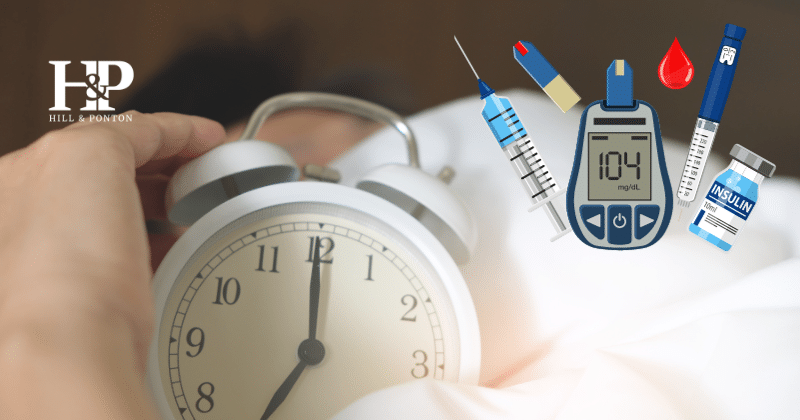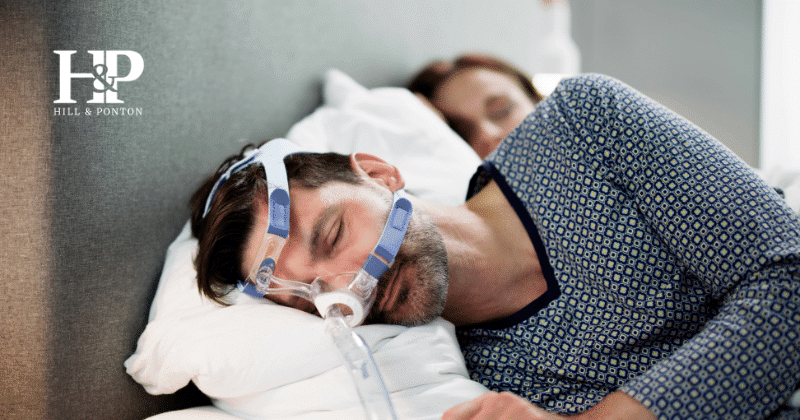For many veterans, the relationship between type 2 diabetes and sleep disorders can be a surprising revelation. While diabetes often occupies the forefront of one’s concerns, sleep apnea—a more silent yet equally impactful condition—can sometimes remain under the radar.
Obstructive sleep apnea (OSA) is a sleep disorder where muscles in the back of the throat intermittently relax and obstruct the airway during sleep, causing disruptions in breathing and overall sleep quality. These brief interruptions, often unnoticed by the individual, can happen numerous times throughout the night.
The connection between diabetes, particularly type 2 diabetes, and obstructive sleep apnea is backed by numerous studies. They reveal that the severity of untreated sleep apnea can directly impact insulin resistance, and subsequently, blood sugar levels.
In the realm of VA disability benefits, recognizing sleep apnea as a potential secondary condition to diabetes can pave the way for increased disability ratings. By understanding the intricate link between these conditions and armed with the right medical documentation, veterans can navigate the VA claim process more effectively.
Furthermore, being aware of the symptoms associated with both conditions and the potential treatments available is essential for overall health management.
Throughout this article, we’ll delve deeper into the relationship between diabetes and sleep apnea, provide insights into the service connection process, and offer guidance on how to secure the rightful VA disability rating for both conditions.
For every veteran, understanding this interplay is not just about VA benefits, but also about optimizing health and well-being post-military service.
What You Need to Know About Type 2 Diabetes
Type 2 diabetes, commonly known among the veteran community, is a chronic condition that affects the way the body processes blood sugar (glucose).
A major concern for many, it impacts the body’s ability to use insulin effectively, leading to insulin resistance. Elevated blood sugar levels over prolonged periods can have serious health implications.
Symptoms of Type 2 Diabetes:
- Increased thirst and frequent urination.
- Fatigue and feeling of tiredness.
- Blurred vision.
- Slow-healing sores.
- Frequent infections.
The daily life of a diabetic patient involves monitoring blood sugar levels, managing diet, and often medication or insulin therapy. It’s essential for veterans to recognize these symptoms early on, as early management can prevent complications.
For a comprehensive understanding of type 2 diabetes, its symptoms, and management strategies, veterans are encouraged to explore our blog post on Diabetes below.

Understanding Obstructive Sleep Apnea (OSA)
Obstructive Sleep Apnea (OSA) is a prevalent sleep disorder characterized by repeated interruptions in breathing during sleep. This occurs when muscles in the throat relax excessively, causing a temporary blockage of the upper airway.
Symptoms of Obstructive Sleep Apnea include:
- Loud snoring.
- Episodes where you stop breathing during sleep — often reported by another person.
- Gasping for air during sleep.
- Morning headache.
- Difficulty staying asleep (insomnia).
- Daytime tiredness or fatigue.
The impact of OSA extends beyond sleep quality. If left untreated, it can lead to cardiovascular issues, heightened blood sugar levels, and even complications related to type 2 diabetes.
It’s critical for veterans, especially those with diabetes mellitus, to be aware of the signs and get a sleep study if symptoms are present.
For an in-depth exploration of Obstructive Sleep Apnea, its implications, and treatment options, we recommend checking out our blog post below.
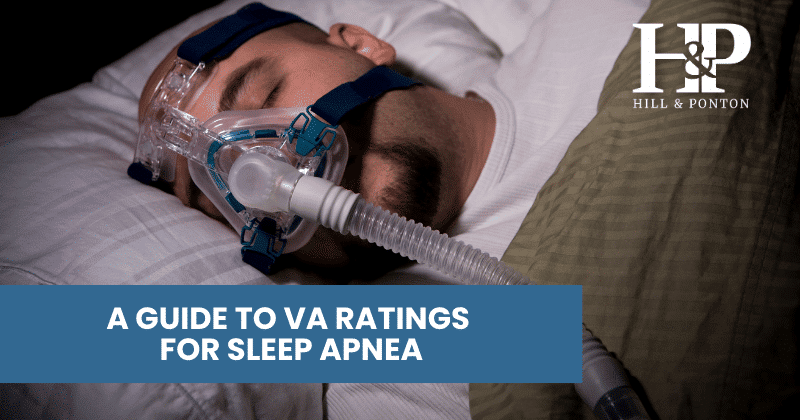
A Guide to VA Ratings for Sleep Apnea
The Link Between Sleep Apnea and Type 2 Diabetes
Veterans face unique challenges and experiences that can sometimes lead to health complications. In recent studies, a compelling connection has been observed between obstructive sleep apnea (OSA) and the development of type 2 diabetes.
Why Is This Connection Important?
Sleep apnea, particularly OSA, can exacerbate insulin resistance. When breathing is interrupted during sleep, it leads to lower oxygen levels in the blood.
This can stress the body, leading to increased blood sugar levels. Over time, this can make insulin less effective at moving glucose from the bloodstream into cells, setting the stage for type 2 diabetes.
Poor sleep quality and daytime sleepiness, often associated with sleep apnea, can influence blood sugar levels and the body’s sensitivity to insulin.
Disrupted sleep cycles interfere with the body’s ability to regulate glucose, increasing the risk of diabetes. Repeated awakenings, even if not fully awake, can increase stress hormone production. These hormones can raise blood sugar levels and lead to insulin resistance.
Both OSA and diabetes can lead to cardiovascular complications. When combined, the risk for heart disease and related problems may rise significantly. Understanding this link is crucial for veterans.
Recognizing sleep apnea symptoms and seeking treatment can not only improve sleep quality but also reduce the risk of developing type 2 diabetes or help in managing it if already diagnosed.
Furthermore, it’s essential for veterans seeking a service connection for VA disability benefits to understand how these conditions may interlink and impact their VA claim.
Interested in filing for diabetes secondary to sleep apnea but have been denied? Contact us today!
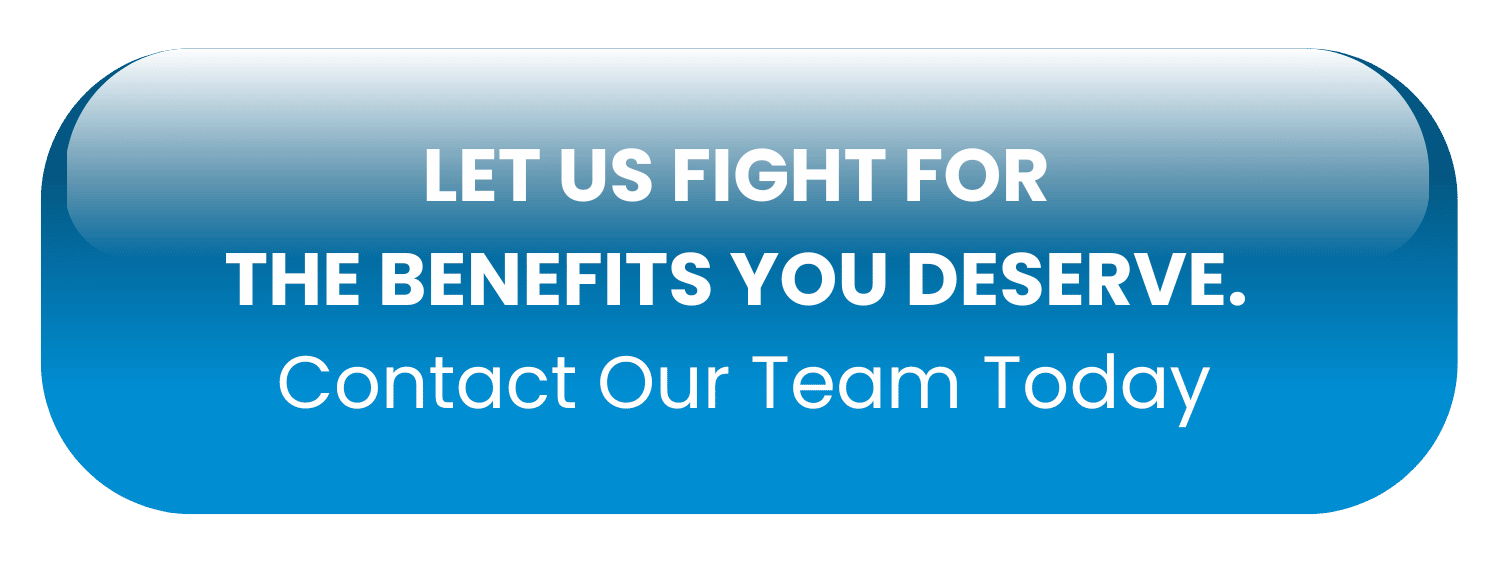
Can Obstructive Sleep Apnea Be Service Connected Secondary to Diabetes Mellitus?
For many veterans navigating the intricacies of VA disability benefits, a question that often arises is whether Obstructive Sleep Apnea (OSA) can be service-connected secondary to Diabetes Mellitus.
Understanding the VA’s perspective on service-connected conditions can provide clarity to this question.
Understanding the VA’s Perspective on Service-Connected Conditions
The Department of Veterans Affairs (VA) recognizes that certain medical conditions can arise as a direct result of military service.
These conditions are termed as “service-connected.”
Additionally, the VA acknowledges that some conditions can develop as secondary to service-connected disabilities.
In such cases, even if the secondary condition wasn’t directly caused by military service, veterans might still be eligible for disability benefits if a direct link can be established between the primary service-connected condition and the secondary ailment.
Instances Where OSA Was Recognized as Secondary to Diabetes Mellitus
There have been instances where veterans successfully established a connection between their service-connected Diabetes Mellitus and the onset of OSA.
Typically, successful claims present robust medical evidence linking the two conditions, backed by medical opinions or “nexus letters” from healthcare professionals.
Emerging Medical Literature on the Link Between Diabetes Mellitus and OSA
In recent years, a growing body of medical literature has highlighted the relationship between Diabetes Mellitus and OSA.
Studies suggest that insulin resistance, often seen in diabetic patients, can lead to increased instances of OSA.
Moreover, disruptions in sleep quality and sleep duration due to OSA can exacerbate blood sugar levels, further complicating the management of diabetes.
This intertwining of symptoms and effects strengthens the argument for OSA being secondary to Diabetes Mellitus in some cases.
For veterans with both conditions, it’s crucial to remain updated with the latest medical research and VA rulings.
By understanding this evolving knowledge, veterans can be better positioned to advocate for the VA benefits they deserve.
Proving Obstructive Sleep Apnea Secondary to Diabetes Mellitus
Navigating the path of VA disability benefits requires precision, particularly when arguing a condition like OSA as secondary to a service-connected ailment like Diabetes Mellitus.
The strength of your claim is largely based on the quality and depth of the evidence provided.
The Imperative of Gathering Evidence and Medical Documentation
Evidence is the cornerstone of any VA claim.
Comprehensive medical documentation can affirm the presence of both Diabetes Mellitus and OSA in a veteran.
Moreover, such documentation should provide insights into the frequency, severity, and impact of symptoms on daily life.
Regular medical evaluations that note the progression or status of both conditions can be instrumental.
Want to learn the importance of evidence for your claims? Check out our guide below!
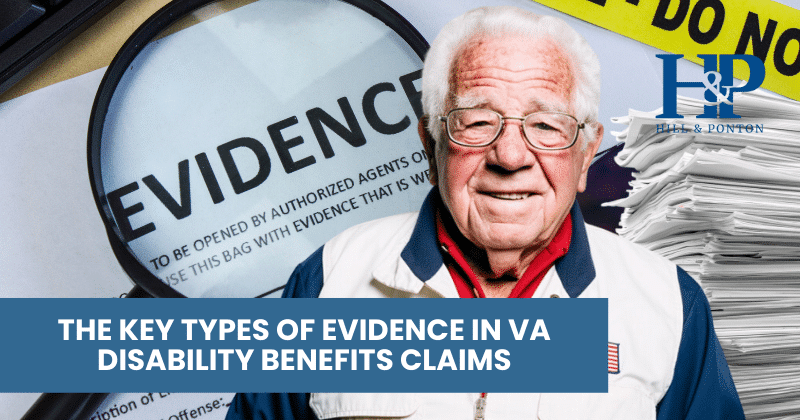
The Key Types of Evidence in VA Disability Benefits Claims
Securing Medical Expert Opinions and Statements
To establish that OSA is indeed a consequence of Diabetes Mellitus, consider obtaining a “nexus letter” from a medical expert.
This letter should explicitly state their professional opinion on the causal relationship between the two conditions.
The more detailed and grounded in medical literature the statement is, the more weight it holds.
Want to learn how to get a well-crafted nexus letter for your claim? Check out our blog post!

The Key to a Winning Nexus Letter
Monitoring, Consistency, and Secondary Evaluations
Consistent monitoring of both conditions can further reinforce the claim.
Secondary evaluations, especially those by sleep study experts or endocrinologists, can provide additional layers of insight.
These evaluations might reveal patterns that correlate diabetes-related issues, such as uncontrolled blood sugar levels, with the exacerbation of sleep apnea symptoms.
The Power of Personal Statements
A personal statement, detailing the daily challenges and symptoms faced due to both conditions, can humanize the medical data.
Such first-hand accounts offer a personal perspective, helping VA officials understand the real-world implications of the conditions.
Navigating the intricacies of VA disability claims can often feel like a daunting challenge for many veterans.
Yet, understanding the importance of evidence, and harnessing the weight of expert opinions, can make a significant difference.
When attempting to establish the service connection of Obstructive Sleep Apnea secondary to Diabetes Mellitus, being thorough, consistent, and proactive in gathering comprehensive data is paramount.
By intertwining personal experiences with robust medical documentation, veterans stand a stronger chance to rightfully claim the disability benefits they deserve.
As always, staying informed, vigilant, and persistent in this journey is the key to a successful VA disability claim.
Learn more about lay statements in our blog post below!

The Importance of Lay Evidence
Have Questions About Understanding How the Claims Process Works?
Hill & Ponton are here to support you with getting started with your claim.
If you are intending to appeal a denied claim, you can contact us for an evaluation and we can help you with this process.
However, if you are considering filing an initial claim, or even if you are interested in learning about the appeals process, we offer a free ebook to get you started on the right foot!
The Road to VA Compensation Benefits will help break down the claims process from start to finish. Click the link below to learn more.

